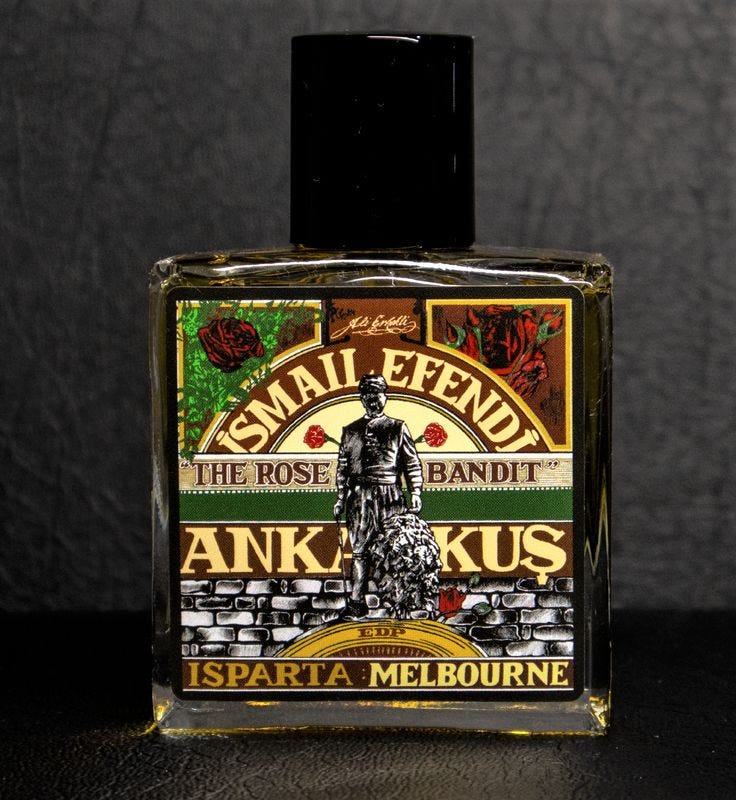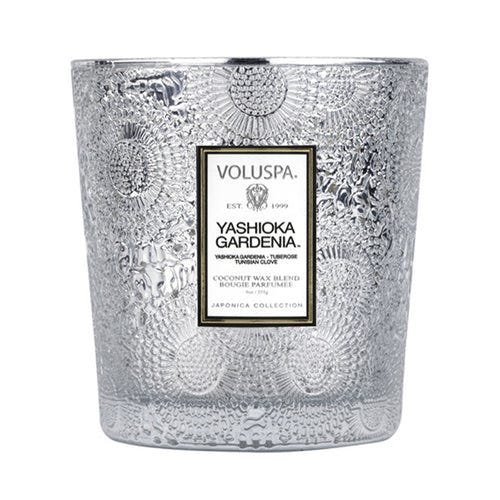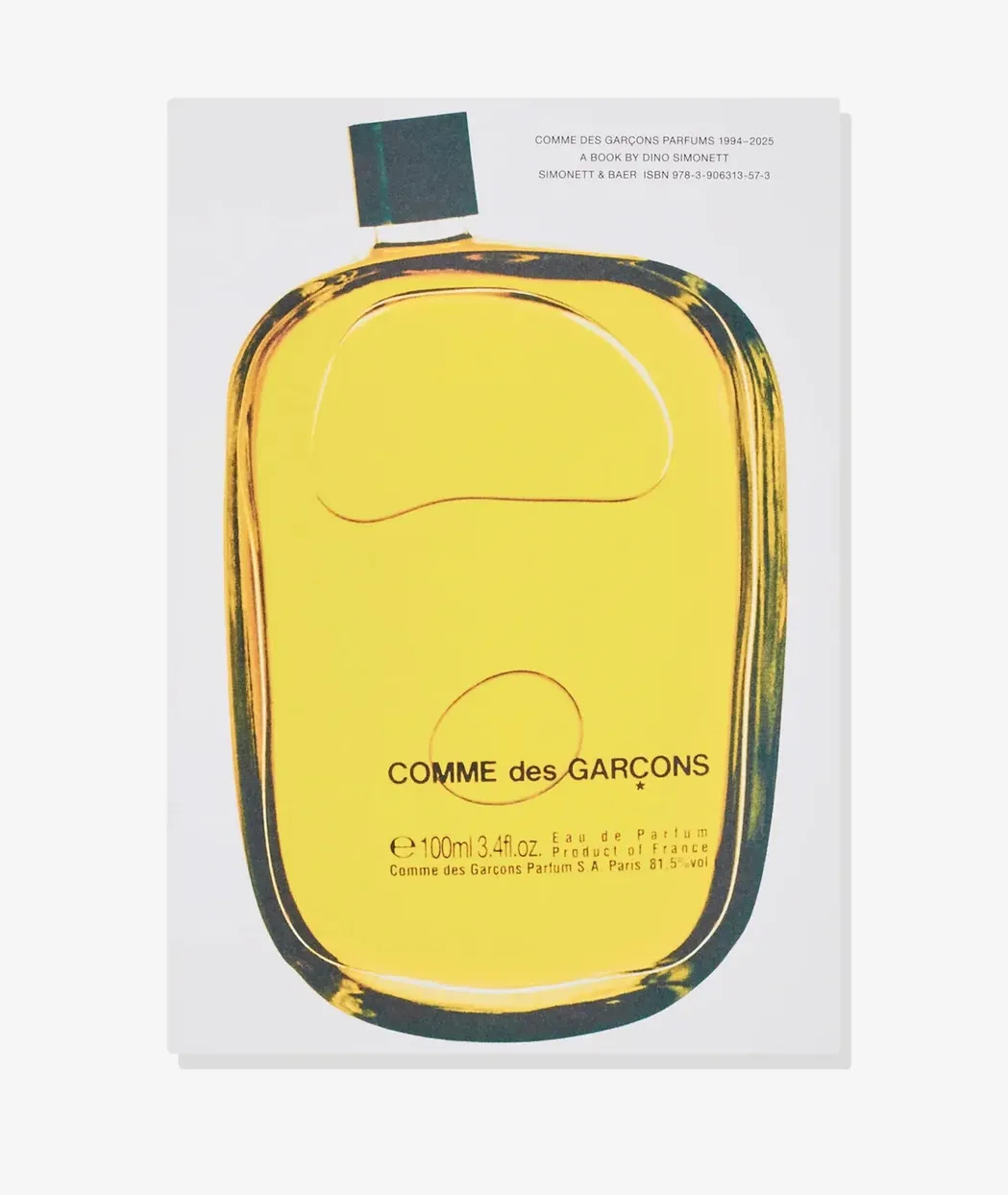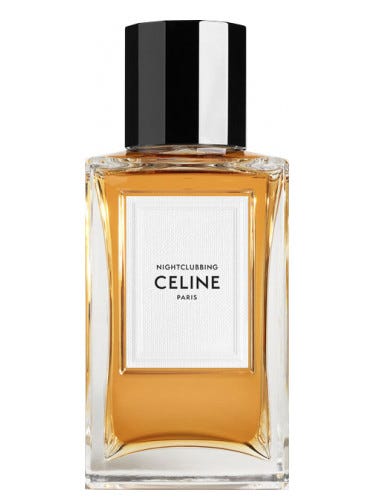I don’t own as many bottles of perfume as people tend to think I do. Perfume is an expensive hobby and prone to excessive consumerism, so I tend to lean my money towards sampling over buying full bottles. If I’m going to add a full bottle to my collection it’s usually after thoroughly road testing a sample and sitting on my to-buy list for months at a time. This is a tedious and unglamorous process, but it keeps my morals and my wallet happy.
There can be a wide gap between what I smell, what I like, and what I buy. Today I thought I would talk about a few perfume and perfume-related things on my covet list and why I want to add them to my collection. Not included here are perfumes I’ve covered in recent newsletters or articles, or any of the bottles I want to rebuy after having finished or lost the originals.
I must also warn you that I’m somewhat boring as a consumer: I don’t tend to blind buy, and I only want to invest in things I love and am sure I will use. My perfume collection is a mix of ultra luxe and ultra cheap, designer and celebrity and artisan and niche, strange concoctions from the chemist and beloved Parisian house classics. I do not discriminate: I judge by the nose and the nose alone.
M
Anka Kuş - Ismail Efendi, The Rose Bandit
The Australian independent perfume scene is growing and I try to support it as much as I am able. My favourite local brand might just be Anka Kuş, the Melbourne based house of perfumer Ali Erkekli. I love every perfume from this house, and was so strongly moved by the terrfiying and divine pear-chocolate bomb of Jezebel that I wrote a review for it on Fragrantica many moons ago.
Anka Kuş perfumes are huge, operatic things that are gothic in scope and intensity. I always liken them to Jim Steinman/Meat Loaf songs in my mind - they sweep across genres and contain worlds within worlds. Ismail Efendi, The Rose Bandit is one such perfume, an enormous rose chypre that feels both French-classic and Middle East-modern in style.
I have a particular scent memory of rose pot pourri from when I was a child - I remember the feel of the dried petals and their strong rose smell. A good rose chypre, like The Rose Bandit and also Papillion’s Tobacco Rose, will send my mind straight to the pot pourri of the 1990’s.
This aromatic association is reinforced by The Rose Bandit’s oregano note, which is not worlds away from the infamous oregano of Interlude Man. Much like it does for food, oregano gives perfume a herbaceous aroma but also a dry, scratchy texture. All the better to reinforce The Rose Bandit’s chypre structure - oregano is one of the hardy plants of Mediterranean like labdanum and oakmoss and there’s an olfactive connection between all of them. The inspiration for the The Rose Bandit comes from Turkish history so this distinctly Mediterranean feeling strikes true.
The Rose Bandit’s heart is structurally a rose - floral and petaled, a little sweet, with the perfect bite of eugenol in the base. What makes it brilliant is the use of the out of fashion but forever beautiful carnation. This floral note has such a punch-in-the-face dose of eugenol that it can sometimes feel like you’ve snorted a line of clove oil when you smell it.
Carnation makes The Rose Bandit spicy and rich and complex and unmodern. It is not quite vintage as it doesn’t have that prowling, dark animalism of a classic chypre, and its edges are too seamless and polished. But there is something out of time about this perfume, as it hovers so brilliantly between a classic structure and modern sensibility.
There’s about a thousand other things going on in this perfume, saffron and red berries and benzoin and a zip of lavender. It needs only one spray to project into the stratosphere and last for days. It’s clever perfume, proper perfume, gothic and huge and intense. When I wear it I feel like the floor beneath me is about to whorl with dry ice, The Phantom of the Opera theme will soon play from somewhere unseen, and that I must immediately change into a white lace nightgown and find a candelabra to hold aloft in the darkness.
Is it any wonder I need a bottle immediately? When life gets a touch too boring a little bit of drama from The Rose Bandit is exactly what you need.
VOLUSPA - Yashioka Gardenia
When I’m asked for candle or room scent recommendations I have to apologetically tell my friends and co-workers that I am quite boring in this part of fragrance culture. Perfume will always be my great love because it’s an art form that relies on interaction with the human body, to the point where the body is almost an invisible part of the formulation. Functional fragrance has its own interests and challenges that fascinate me but eventually I always end up wandering back to the perfume aisle.
But regardless of all that, I live in a house and I do like for it to smell good.
There are a few candle brands I love - Diptyque, like everybody else, and the Australian brand Peppermint Grove - but the only brand I love with consistency across the range is Voluspa.
The brand is named after the Norse poem that tells the mythological creation of the world, and there’s a lot of Norse stuff going on in the brand’s imagery that appeals to my love of a good story. The candles are all poured in etched-glass vessels and the wax always burns cleanly to the edge so you can reuse the containers. But most importantly the candles smell really, really good.
When I’m at home I almost always have Voluspa’s French Cade and Lavender burning to the point where I’ve become a touch nose blind to it. The only option is to buy more candles and diversify the stock. I love every scent from the brand but was surprised but how lovely their Yashioka Gardenia smells - gardenia is an incredibly difficult note to construct in any form of perfumery and most gardenias are just a tuberose wearing a different coat.
There’s certainly a big slug of tuberose in this scent, but its bitter and mentholated facets are tamed and in the candle’s underbelly is a touch of the funkier, almost savoury dirtiness that makes a realistic gardenia accord shine. There’s also a pretty huge slug of clove here, which is an easy win in my book as I love eugenol.
The most interesting thing about functional fragrance is the impact of the carrier on the scent. Perfume - or fine fragrance - is relatively neutral ground because its carrier is scentless and colourless alcohol. With pretty much every other product the carrier - be it wax for candles or powder for laundry products - can have an effect on the end product.
Voluspa candles use a coconut oil and there’s something of its rich fattiness that comes across in the candle’s throw. There is no coconut scent to the candles but more a feeling of round fullness to the scents, as if the oil’s rich texture has been translated to olfaction.
Taken all in all, Yashioka Gardenia is a candle I would call delightfully weird. I hope to build a little corps of Voluspa candles for every mood and change of weather, and will happily add this one to the ranks.
Acqua di Parma - Oud
In perfume, as in life, sometimes there is no space for sense or reason and the heart simply wants what it wants. So it is with me and Acqua di Parma’s Oud.
Before we go any further: what the hell perfume are we talking about? There is the original Colonia Intensa Oud Eau de Cologne Concentree from 2012; the pithier Colonia Oud from the same year; or the Oud Eau de Parfum from 2019. The answer is all of them, as I’ve smelled all three and they are essentially the same perfume. Why Acqua di Parma released them with three different names remains a mystery.
What I know is that the original concept for this oud perfume seems to originate from Francois Demachy for Acqua di Parma in 2012. Demachy spent a few decades running research at Chanel before jumping to LVMH and working his way up to becoming in-house perfumer at Dior. He is the creator - or, some may say, the villain - behind such perfumes as Miss Dior and Sauvage.
Occasionally LVMH will sublet their in house perfumers to smaller brands also owned by the conglomerate, which is how we find ourselves with presumably a rejected Dior oud perfume being released by Acqua di Parma.
Every brand in the 2010s was releasing an oud. For a few years there were so many new oud perfumes on the market that smelled nothing like oud that a sort of cultural hoodwinking happened. In a perfumed version of creating a desert and calling it peace, the big fragrance houses invented an accord and called it oud . People who had never smelled oud believed them. This faux-oud is a woody amber accord, heavy on ambroxan and patchouli synthetics, that smells strong and new with a vague handwave to traditonal Middle Eastern styles.
Acqua di Parma Oud is almost a perfect case study in this microcosm of 2010 ouds. It is this exact style slightly adapted to fit the Acqua di Parma ‘house code’ - the brand is known for its colognes and light citruses. Thus we get a traditionally heavy scent in oud given a lighter opacity to fit the Parma style.
Is this a good representation of oud? No. Is it, indeed, a good perfume? Not really - there’s nothing particularly novel or artistic about it.
And yet, something draws me back to it time and time again: the simple fact is that I just like the stuff. It is medicinal but not sickly, gossamer light but with enough body to last for hours on skin, with an oud that is compelling without being too artificial or overbearing. I must have burned through six or seven samples of the stuff and I keep coming back for more.
I can give you no better explanation than that I understand this perfume’s history and context and while nothing in that appeals to me whatsoever, I like smelling it and I like wearing it. This silly LVMH carbon copy Oud makes me smile.
I’ve gotten to the checkout stage with Oud a half dozen times before exiting the window: this perfume costs a ridiculous $390AUD for 100ml. I would spend that much on an independent or artisanal perfume but for an LVMH brand that’s a little beyond the pale. However, I’m in luck: Oud is one of those woody-ambers beloved by male fragrance aficionados. I remain confident that a partial will show up in a Facebook group just in time for me to snatch it up and finally have a bottle of my own.
Comme des Garçons Parfums - 1994-2025
It is a rare and happy day when I can satisfy my love of books and of perfume in one fell swoop. The amount of English books about fragrance have trebled in the past few years. This is a happy occurrence as my French remains at the same level as my last class in high school when I told my teacher I was finishing up that year (That is,’ she had said gravely, ‘probably for the best.’).
My little perfume library brings me as much joy as my perfume collection. Because perfume sits in a strange crossroads between beauty, fashion, art, and consumerism, this means that a lot of perfume books are heaving coffee table bricks that could probably be used as a weapon in a pinch.
A new addition to the perfume book as weightlifting locum released last year that tracks the development of Comme des Garcons perfume since their launch in the 90’s, and I have been coveting it every day since.
Comme des Garcons are as special in the world of fragrance as they are in the world of fashion. In many ways Rei Kawakubo’s anti-establishment ethos is even clearer in CDG perfumes because the fragrance world has so many conventions to defy. This has taken the form of perfumes called Cement and Sticky Cake, scents like Rouge and Black that evoke the very un-perfumey scents of beetroot and petrol, and even subtler forms of innovation that use traditional perfume accords in new and challenging ways.
The early CDG years were the playground of perfumers like Bertrand Duchaufour and Mark Buxton who developed modern masterpieces like the Incense line and Comme des Garcons 2: Man. As with its fashion line, CDG perfumes bring existential questions to the fore through their compositions: if I recreate the scent of sunscreen, is that a perfume? If I sell the scent of copper, is that a perfume? If it smells and you spray it on your skin, is that a perfume? How far can the bounds of a thing be stretched until it becomes something new?
To make a long story very short, Comme des Garcons perfumes are important. They are perhaps the only designer perfume brand bold enough to content with the very nature of perfume itself, a conversation that is most often found in indie and artisan fragrance spheres. You can understand why even though this book seems to be mostly pictures, it is imperative I get my hands on it.
Unfortunately Comme des Garçons Parfums - 1994-2025 is being sold for $250 in Australia, which makes me sad, and through Amazon, which makes me sadder. But I’m patient. I’ve been a perfume book hunter for enough years now to know that sometimes all you’ve got to do is wait. Wait patiently, and the world will eventually deliver that enormous, unwieldy tome of a book right into your arms.
Celine - Nightclubbing
When it comes to buying a perfume, wanting is not enough.
With the amount of bottles I own I try to be realistic about whether I’m going to really get enough value out of another 30 or 50ml bottle, let alone a 100ml behemoth. There are perfumes I love enough that the answer to that question is yes, but even then I only get new bottles on rare occasions - as gifts from others or as a gift to myself.
It’s good practice to treat perfume this way. The Sniffy Fund (the sub-savings account I keep for all things fragrance related) is mostly spent on samples and decants, with a splurge for books when I can find them. I buy perfume bottles for the milestones: a new job or a promotion, a goal met and exceeded, my birthday, the new year.
In this way the bottles contain not just the juice but also memories, the way I suppose anyone can look at a collection they have curated with love and passion and use it to tell a story of their life.
I don’t know what my next milestone will be or when it will come, but I know that I will buy a bottle of Nightclubbing to mark it.
The thought, frankly, makes me shudder a little. The entire Celine range is priced at $490AUD for 100ml bottles, with no smaller offerings. That’s a ridiculous amount to pay for any perfume on the face of the earth, and doubly so for someone who owns a pretty robust perfume collection already. I will spend the rest of my life chewing down a bottle of Nightclubbing and probably never reach the bottom.
These are all good and sensible points. Here’s the riposte: I love Nightclubbing so, so much. I love this perfume and the thought of not having its dirty nicotine and iris scent within easy reach makes me rush to my perfume cabinet and hold up my dwindling sample to see how much is left. The thought of my vial dropping too low emits a low, humming frequency of dread through my nervous system.
You’ve got to be the special kind of weirdo to love Nightclubbing. This is a perfume whose brief is to recreate the powdery, ashy, dirty smell of a good night on the town, and it does so with panache. The heart of the perfume is a thick and powdery iris-vanilla accord that is accentuated with a patchouli and oakmoss base to give the perfume a full bodied, classic feel.
This is all shot through with what might be my favourite galbanum note in perfumery, a jittery and bitter thing that somehow smells the residue a cigarette leaves on your fingers. It is the perfect, poisonous smell of nicotine that makes Nightclubbing so unique and so addictive.
Nightclubbing has always smelled to me of the camaraderie and good will one only ever finds amongst tipsy women in a club bathroom. This perfume smells like the woman at the sink next to you who, though she is a stranger, is all too happy to lend you some lip balm or hold your hair back when that fifth vodka-cranberry refuses to stay down.
There’s a warmth to Nightclubbing that moves between worlds: sensual but comforting, powdery but sharp, full bodied yet aerated and smoky. It has the cohesion of a good perfume and the deep contrasts and versatility of a great one.
I wish at times that I didn’t love this perfume as much as I do. That $490, whenever I end up spending it, is going to sting. But I also know that Nightclubbing and I are going to have a happy life together,. Every so often I spray some of the precious sample on my wrist and try to give myself a reason.
But then I check my bank account, sanity is restored, I remember who I am and I wait once more for the milestone to come. ◙











The Celine website is difficult to navigate for fragrance.
They do carry 15 ml travel sizes on the UK site. Sold as 2 x 15ml sets for £100. They can be two different fragrances of your choice. https://www.celine.com/en-au/celine-haute-parfumerie/travel-sprays/travel-spray-refills-eau-de-parfum-2x15ml-6PC1F_master_refill_1.html
That link should take you to the Australian site.
If not, go to the Australian site & search for “travel”. The last items are the travel refills. They don’t need a case to work.
Sorry, not sorry for enabling
This was an equally good case for me sampling AND not sampling nightclubbing. I want to smell it now but if I like it? What then?!